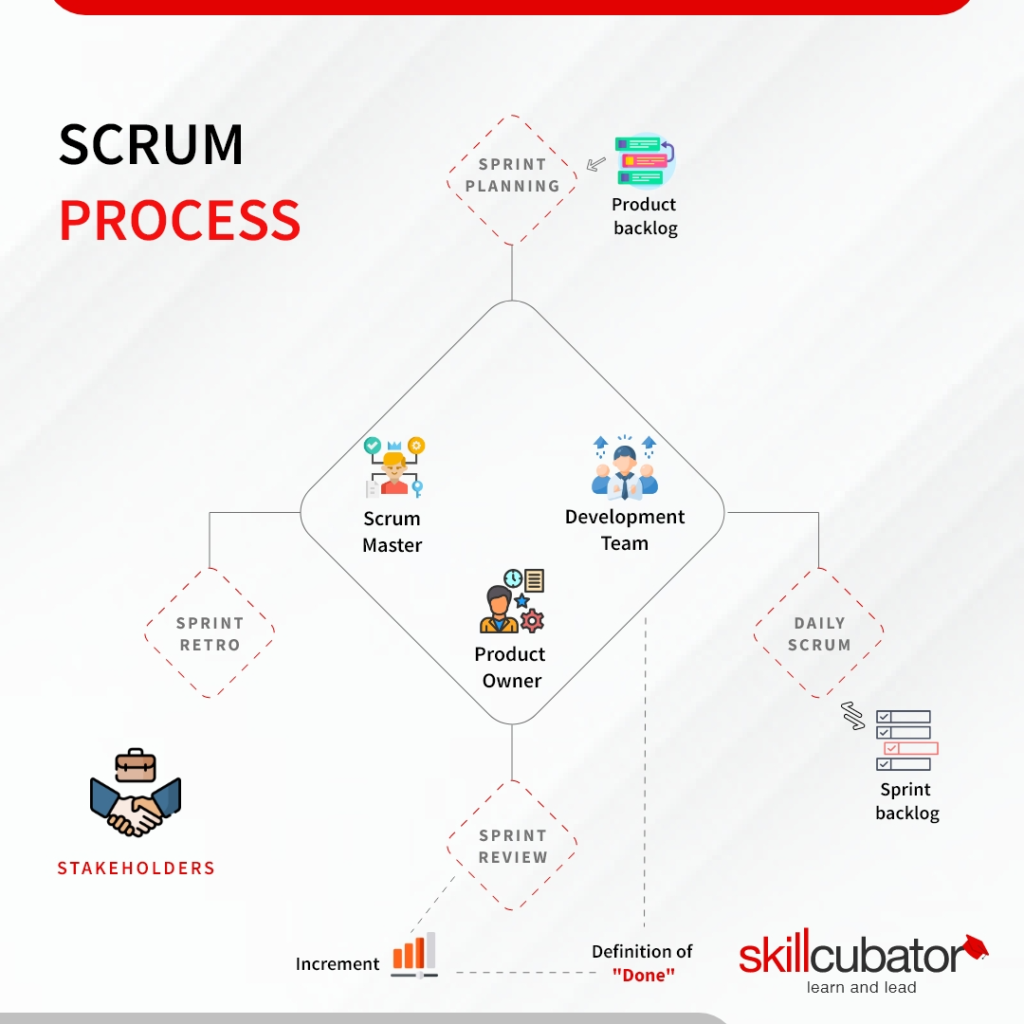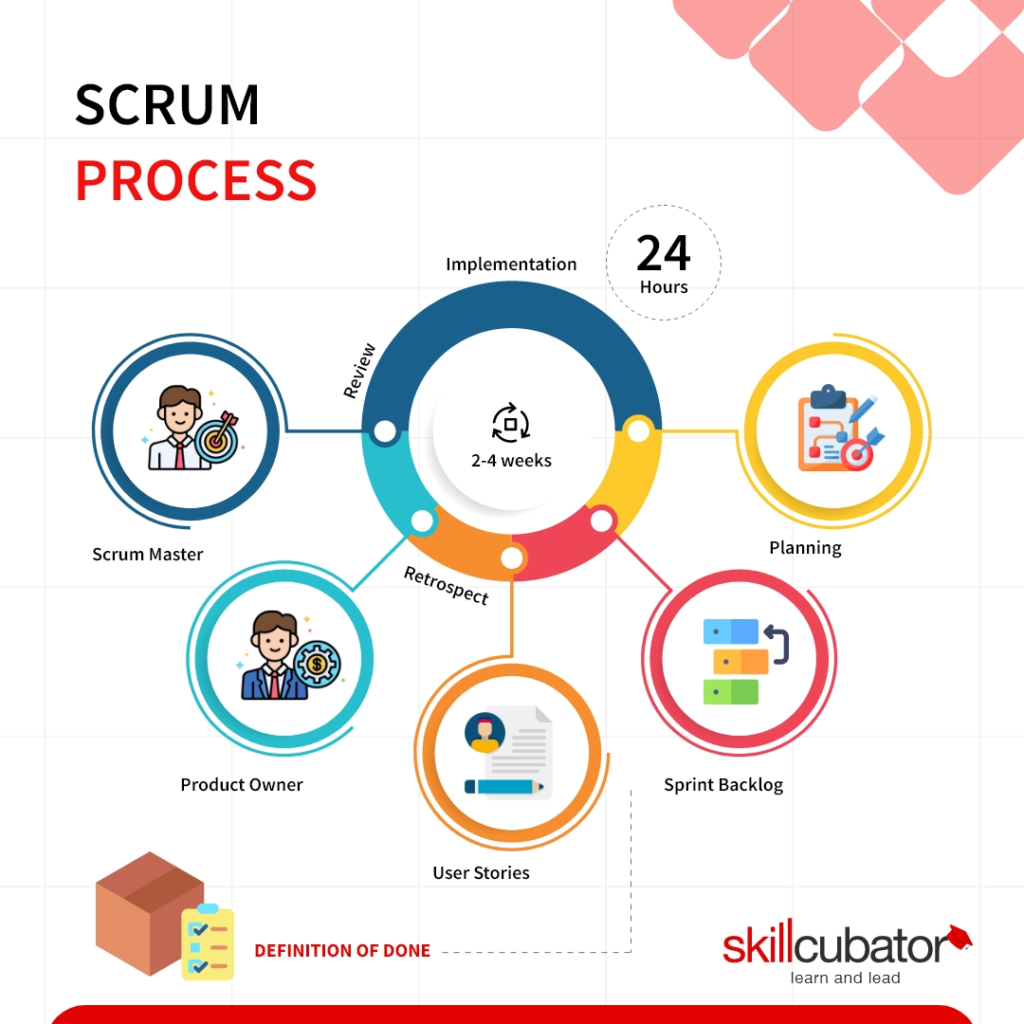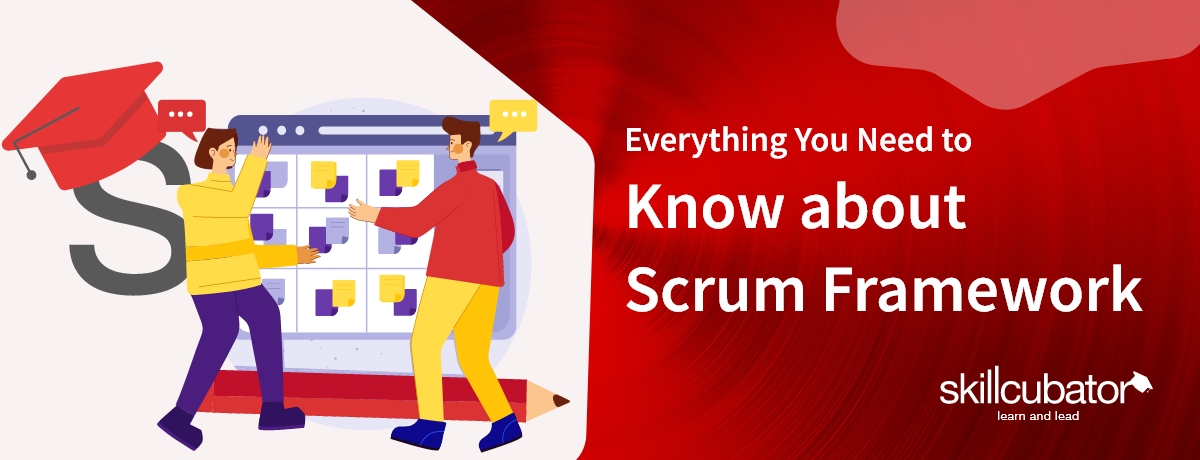Everything You Need to Know about Scrum Framework
Scrum is an agile framework, mainly used for greenfield software development projects. But Scrum can very well be used for non-software development projects as well. When it comes to projects, your ultimate goal is to successfully deliver the project meeting all the requirements.
Setting a long-term goal will break your head and make the process tedious. This is where Scrum enters. In this blog post, we’ve written the basics about the working of Scrum in software development projects. By the end of the blog, you’ll get better clarity on the Scrum process and elements.
Let’s get started.
1. What is Scrum?
Imagine you’re handling a software development project. Using the Scrum framework, you can set small goals by assigning individual tasks to your team. When a task gets completed, you send it for review, receive feedback, and rework it.
Scrum is a framework to solve complex problems involved in project development. Scrum works on the principles of empowering users to handle projects more efficiently and professionally.
| Who Uses Scrum? Scrum tends to be the perfect pick for software development projects, especially looking for building new features, capabilities and functionalities. |
2. How does Scrum Work?
Scrum mainly aims at
- Optimal way to handle a project
- Team collaboration
- Iterative project management approach
- Set easily attainable goals
- Break complex tasks into smaller ones
In Scrum, a team of 3 different members are accountable for completing the project with the desired outcome. The meetings held here are referred to as events, there are 5 different types of events in Scrum. In these events, the team members discuss the 3 artifacts and how they can take them forward.
Before using the Scrum framework for your projects, you’ll have to be precise about these terms.
| Roles | Responsibilities |
|---|---|
| Scrum Master | Shares his/her knowledge of Scrum through coaching, teaching and mentoring the team for the team/organization to perform effectively |
| Product Owner | Administers the team and optimizes the product for meeting the quality outcome. Creates backlogs of work to solve a complex problem in a product |
| Developers | Design, develop and test the product for the stakeholder/client |
Scrum Events (5)
Sprint – Specific time period of one month or less than that within which the work needs to be completed. Once a sprint ends, a new sprint starts immediately
Sprint Planning – Meetings to be held for planning the tasks in Scrum – Which is priority? How to complete it? What are the possibilities? What will be the dependencies? What are the tasks to be completed in a sprint?
Daily Scrum – Daily meetings during which the developers will deeply be auditing the works that are in progress
Sprint Review – Meetings to be conducted at the end of every sprint during which the stakeholders and clients review the completed tasks in a sprint and what are the works to take in the upcoming sprint
Sprint Retrospective – Scrum team meets together to discuss how the previous sprint went on and what all to avoid and adapt to make further improvements in future sprints
Sprint Artifacts (3)
Product Backlog Items (PBIs) – List of works assigned to roles that are to be completed for the product outcome
Sprint Backlog Items (SBIs) – List of works that developers plan to complete within a sprint
Increments – Cumulative values delivered at every sprint. Works are split into small tasks all of which are accountable for fulfilling the product goal. All of these small works are to be done to reach that one goal, the product goal. It’s the end target the teams work for.
Each of the roles, artifacts, and events has got a unique purpose. Therefore, ignoring any of these elements or altering the structure or not following the Scrum rules will end up in delivery complications.

3. Process of Scrum
The Scrum process is an empirical and repetitive process.
The product owner has complete knowledge of the product vision. He/she prepares a list of items, called Product Backlog Items (PBIs). Suppose a particular item doesn’t deliver the expected value or requires alternative ways, then the product owner can remove the item and add it to the list of works.
Right after the PBIs are added, the Scrum team goes on a discussion and ordains a common goal which is, the sprint goal, meaning, output to be delivered within the sprint. Then, the developers select a list of PBIs, add them to the Sprint Backlog Items (SBIs), and work on them. These SBIs are to be delivered within the sprint.
Once the task is completed and the expected value is produced within the sprint, the developers will send it to the client/stakeholder for sprint review.
The stakeholder/client will inspect the work produced by the development team. The clients/stakeholders provide reviews and share their feedback. If there is any feedback, the product owner updates the PBIs and adds the items that are to be resolved.
The Scrum team can inspect this Scrum implementation through sprint retrospectives. The interactions between the team and skills required to fulfill the task and anything that requires continuous improvement of the product can be discussed.

4. Case Study of a Popular Organization Adapting the Scrum Framework
Penta Technologies software was built to meet the unique requirements of their customers. The problem is, customers pay for specific features, and because of that, they took control of the feature which made the product too complex and difficult to scale.
This was due to the lack of transparency and efficiency in the previous framework. The team decided to switch to the Scrum framework. For this, they hired a Scrum professional to help them with Scrum adaptation.
To read more on this, do check out the case study.
How to become a Professional Scrum Master?
Scrum focuses on the collective intelligence of the team using it. Instead of guiding the users with a lot of instructions, the framework fosters the interactions between the team members and drives them toward quality outcomes.
To master Scrum and use them for your software projects, you can avail of the training programs offered by reputable software training institutes. At Skillcubator, our well-trained Scrum coaches offer professional Scrum Master & Product Owner training with certifications.
If you’ve any further doubts about our course program, you can reach out to our team anytime. We’re available on Whatsapp, you can contact us there as well.
